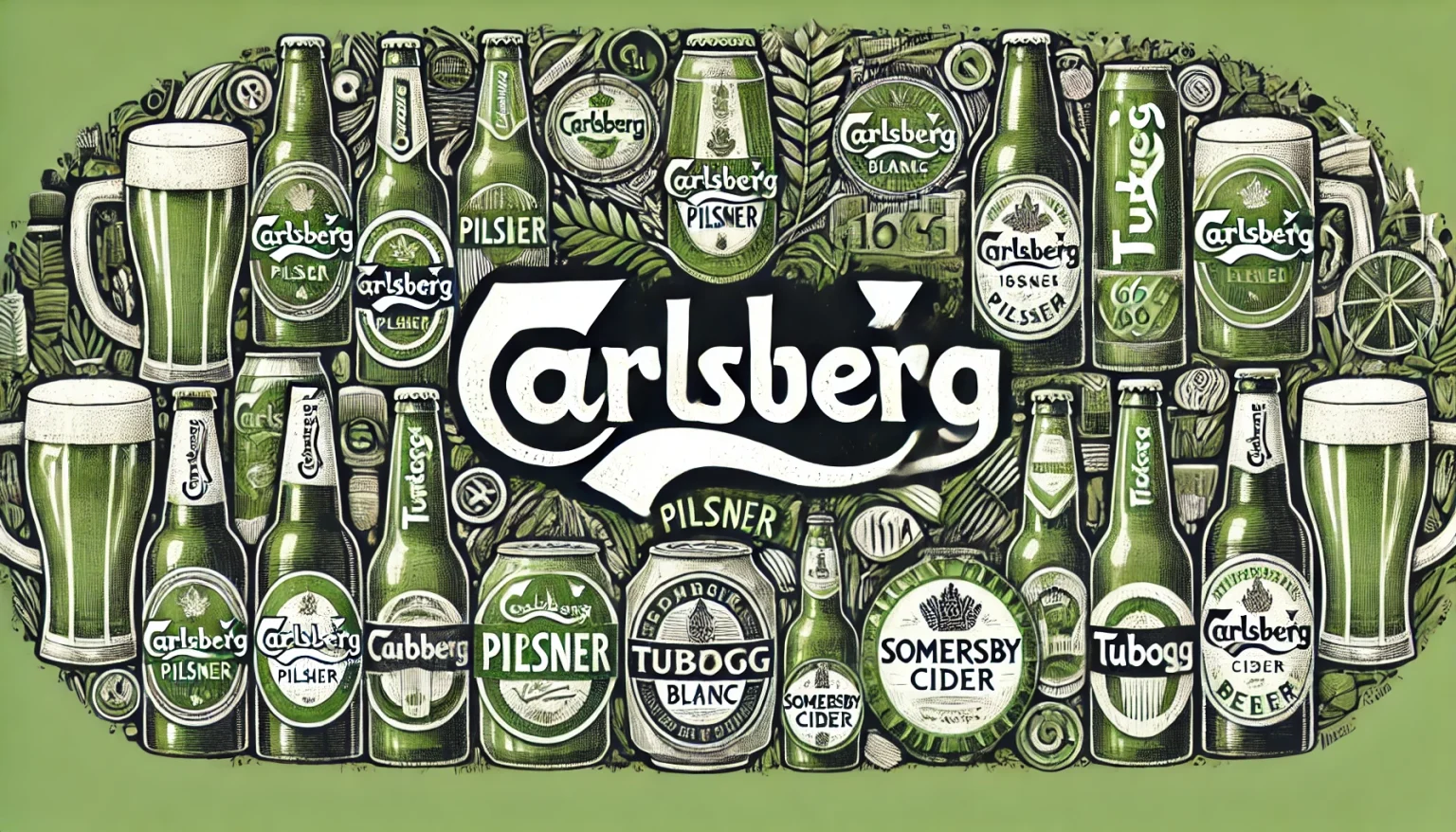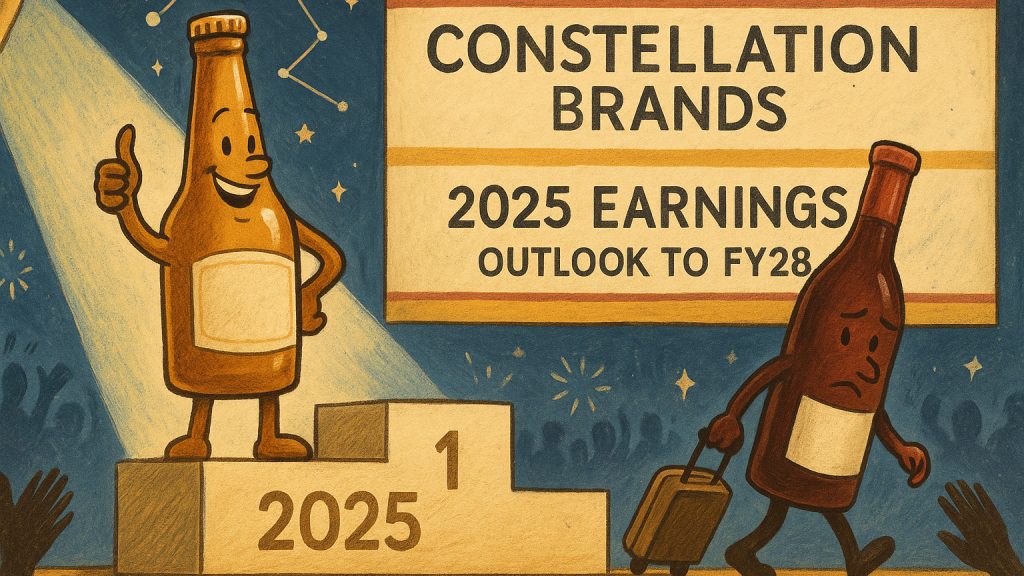On February 6, 2025, Carlsberg A/S released its 2024 financial results, showcasing profitability and strategic agility in a turbulent year. Facing weak consumer sentiment, adverse weather, and geopolitical flux, the Danish brewer delivered solid growth, executed landmark acquisitions like Britvic, and advanced its “Accelerate SAIL” strategy. This analysis unpacks Carlsberg’s financial achievements, strategic evolution, market dynamics, and forward trajectory, spotlighting its adaptability in the global beverage arena.
Financial Performance: Profit Growth Fueled by Efficiency
Carlsberg’s 2024 revenue reached DKK 75,011 million, up 1.9% from DKK 73,585 million in 2023, with organic growth of 2.4% driven by a 2% rise in revenue per hectoliter (revenue/hl) and a 0.4% volume increase to 125.7 million hectoliters (m hl). Beer volumes edged up 0.2% to 101.2 m hl, while other beverages grew 1.6% to 24.5 m hl. Operating profit before special items hit DKK 11,411 million, up 2.8% reported and 6.0% organically, reflecting a gross margin boost of 120 basis points to 45.8%. This stemmed from a 5% organic rise in gross profit per hectoliter, aided by efficiency gains and a favorable country mix—despite inflationary pressures and a DKK 75 million hit from hyperinflation accounting in Laos. The operating margin rose 10 basis points to 15.2%.
Supply chain optimization under Accelerate SAIL delivered DKK 1,500 million in savings, streamlining logistics and procurement to offset costs and fund a 6% organic increase in marketing spend (8.7% of revenue). Free cash flow remained robust, supported by strong EBITDA growth, though tempered by higher investments in markets like China and Laos.
Shareholder returns totaled DKK 5,560 million, with DKK 3,600 million in dividends (DKK 27 per share, 49% payout ratio) and DKK 1,960 million in buy-backs. Net debt rose due to acquisitions but stayed comfortably below the 2.5x target, affirming financial discipline.
Strategic Transformation: Building a Diversified Beverage Powerhouse
Carlsberg’s 2024 strategy, Accelerate SAIL, targets 4-6% organic revenue growth CAGR and superior profit growth through premiumization and efficiency. The £3.3 billion Britvic acquisition (DKK 29,481 million), completed January 16, 2025, is a game-changer, lifting non-alcoholic volumes to ~30%. It promises £100 million in annual synergies by 2029 (£80 million by 2027) via integrated UK logistics—merging Carlsberg’s beer trucks with Britvic’s soft drink routes—shared procurement for packaging, and cross-selling Pepsi with premium beers like 1664 Blanc through Carlsberg’s robust channels. This transforms Carlsberg into a leading UK beverage player, leveraging scale for margin gains and market share.
In Asia, acquiring full control of Carlsberg South Asia Pte Ltd (CSAPL) on November 29, 2024, strengthens its hold on India’s booming beer market (5.7 m hl, 10% CAGR 2014-2023). With #2 positions in premium and mainstream segments, Carlsberg aims to capitalize on India’s 140 million beer drinkers via brands like Tuborg, adding DKK 36 million in revenue and a DKK 400 million revaluation gain. The DKK 23,000 million sale of Russia’s Baltika Breweries on December 4, yielding a DKK 2,258 million impairment reversal, refocused resources, while a PepsiCo bottling deal for Kazakhstan and Kyrgyzstan (effective Q1 2026) doubles its Kazakh business. In the UK, full ownership of Carlsberg Marston’s (acquired July 31 for £206 million) enhances control. These moves diversify Carlsberg beyond beer, targeting high-growth regions and categories.
Market Dynamics: Premiumization Outshines Mainstream
Regional results varied. Western Europe saw a 1.1% volume drop to 42.9 m hl, but revenue grew 2.0% to DKK 38,081 million (organic 0.9%), with operating profit up 6.0% to DKK 5,274 million (margin 13.9%, +60 bp). Nordic gains—Sweden’s Pepsi Max surge, Finland’s premium boom—offset France’s market share slip. Asia revenue fell 1.5% to DKK 20,466 million (organic +1.0%) due to a -2.8% currency hit, with volumes down 0.9% to 44.6 m hl; profit rose 1.0% to DKK 4,632 million (margin 22.6%, +50 bp). China gained 30 bp market share despite a 4% market decline, fueled by premium growth, while Laos hit record volumes. CEEI excelled, with volumes up 4.0% to 49.2 m hl, revenue up 11.8% to DKK 16,454 million (organic 7.8%), and profit up 6.8% to DKK 3,039 million (margin 18.5%, +10 bp), led by Ukraine and India.
Premium beer grew 2%, alcohol-free brews 6%, Beyond Beer 5%, and soft drinks 1%, with Carlsberg (+9%) and Tuborg (+5%) leading. Mainstream beer dipped 1% amid weather and sentiment challenges, but premiumization cushioned the blow.
Sustainability and Future Momentum
Carlsberg’s Together Towards ZERO and Beyond cut carbon emissions 3% since 2022, replenished 16% of water in high-risk areas, and doubled regenerative barley to 12,000 tonnes. For 2025, it forecasts 1-5% organic profit growth, despite a 2-3% hit from losing San Miguel in the UK. Britvic’s GBP 250 million profit should hold, with early synergies offset by integration costs. Investments will rise to support growth markets, backed by DKK 1,500 million in supply chain savings. Carlsberg’s shift to a diversified beverage leader—spanning premium beer, soft drinks, and regions like India—positions it to thrive in a consolidating industry, blending resilience with ambition.
References


